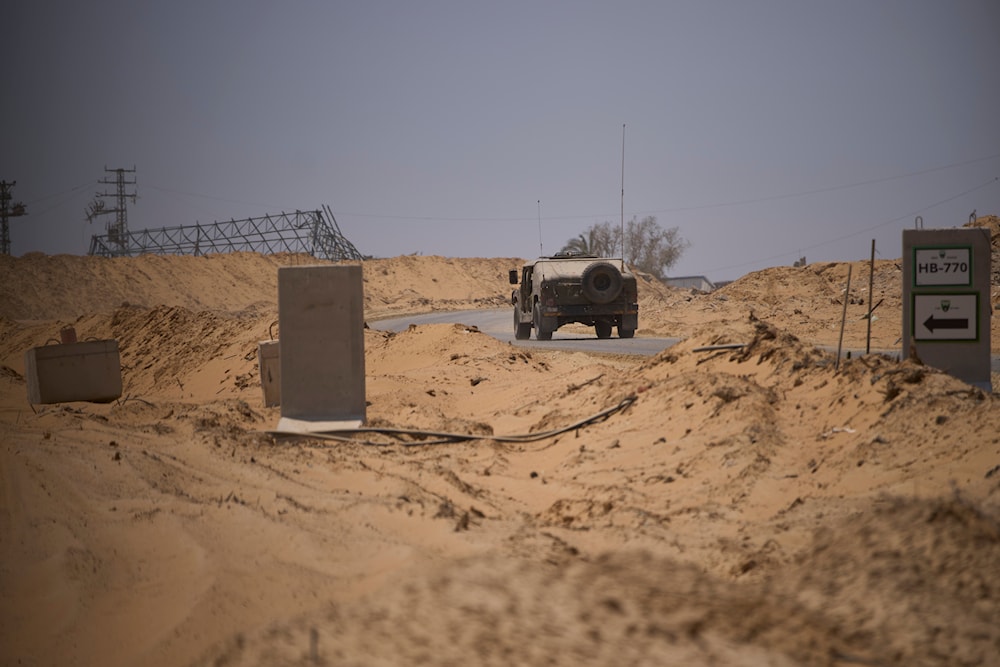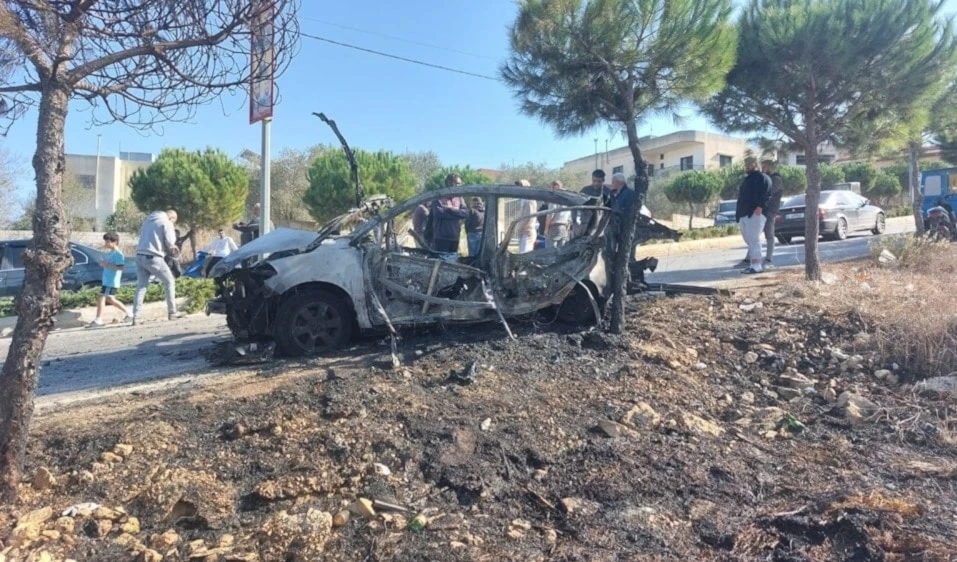New Israeli corridor deepens Gaza fragmentation, ethnic cleansing
Framing it as a security move, the Israeli entity continues redrawing Gaza’s geography through militarized corridors designed to isolate and control Palestinians.
-

Israeli army vehicles transport a group of soldiers and journalists along the 'Morag corridor' in southern Gaza on June 8, 2025. (AP)
The Israeli occupation forces announced the completion of a new corridor through the southern Gaza Strip, cutting across Khan Younis from east to west.
Dubbed the 'Magen Oz' route, the corridor, spanning approximately 15 kilometers, was constructed over recent weeks by the occupation’s 36th Division. According to Israeli military sources, the project aims to dismantle what "Israel" describes as “terror infrastructure and operatives” linked to the Palestinian resistance.
The 188th Armored Brigade and the Golani Infantry Brigade reportedly completed the corridor after linking up along the route, which now bisects Khan Younis.
A map released by the Israeli military shows that the 'Magen Oz' corridor connects with the pre-existing 'Morag corridor', which already separates Khan Younis from the city of Rafah to the south. Together, the two routes form a network of separation barriers across the southern Gaza Strip.
'A new bargaining chip'
Israeli Army Radio military correspondent Doron Kadosh described the newly completed corridor as a critical component of the Israeli pressure campaign in the Gaza Strip.
“This is a key part of increasing pressure on Hamas,” Kadosh stated, adding: “Israel’s new bargaining chip in the negotiations? Following the Netzarim, Philadelphi, and Morag routes, the Israeli army has now announced the construction of a new corridor, the Magen Oz axis.”
'A blueprint for dismantling Gaza'
Back in April, Israeli Prime Minister Benjamin Netanyahu publicly acknowledged a strategic escalation in Gaza, declaring that the military had “stepped up a level in the Gaza Strip, with troops taking control of land and destroying infrastructure.”
At the time, Netanyahu confirmed that the Israeli army intended to take control of the so-called 'Morag corridor', describing it as part of a broader campaign to fragment the Gaza Strip. According to Haaretz, the corridor was envisioned as “an additional Philadelphi route” or “a second Philadelphi axis,” referencing past Israeli buffer zones designed to carve up the Strip under the guise of security.
Netanyahu deflects blame as Gaza war drags with no clear military goal
The Israeli newspaper Maariv acknowledged on Tuesday that the Israeli army is “bogged down” in Gaza without a defined goal, while military leadership reportedly avoids confronting the political echelon with the harsh realities of the war.
According to Maariv, Prime Minister Benjamin Netanyahu absolved himself of responsibility for the failures of October 7 during a US media interview, instead shifting blame onto the Israeli occupation forces and intelligence community. The paper described this move as a dangerous red line crossed by the current Israeli government.
Netanyahu purposely prolonging Gaza war
Avigdor Lieberman, head of the Yisrael Beiteinu party and former Israeli security minister, accused Prime Minister Benjamin Netanyahu last Thursday of deliberately extending the war in Gaza to satisfy far-right members of his cabinet.
Lieberman stated that Netanyahu is trying to appease Finance Minister Bezalel Smotrich and Police Minister Itamar Ben-Gvir by continuing the aggression on the besieged Strip despite growing military consensus that the war has achieved its strategic goals.
“As long as the Chief of Staff says the operation in Gaza has fulfilled its objectives, what are we still doing there?” Lieberman asked.
His remarks follow a statement made earlier by Israeli occupation forces Chief of Staff Eyal Zamir, who indicated that the war objectives in Gaza had been exhausted, signaling a potential shift in military posture.
The growing divide between political and military leadership has added further strain to the Israeli war cabinet, where far-right influence continues to shape key decisions despite opposition from within the establishment.

 4 Min Read
4 Min Read










